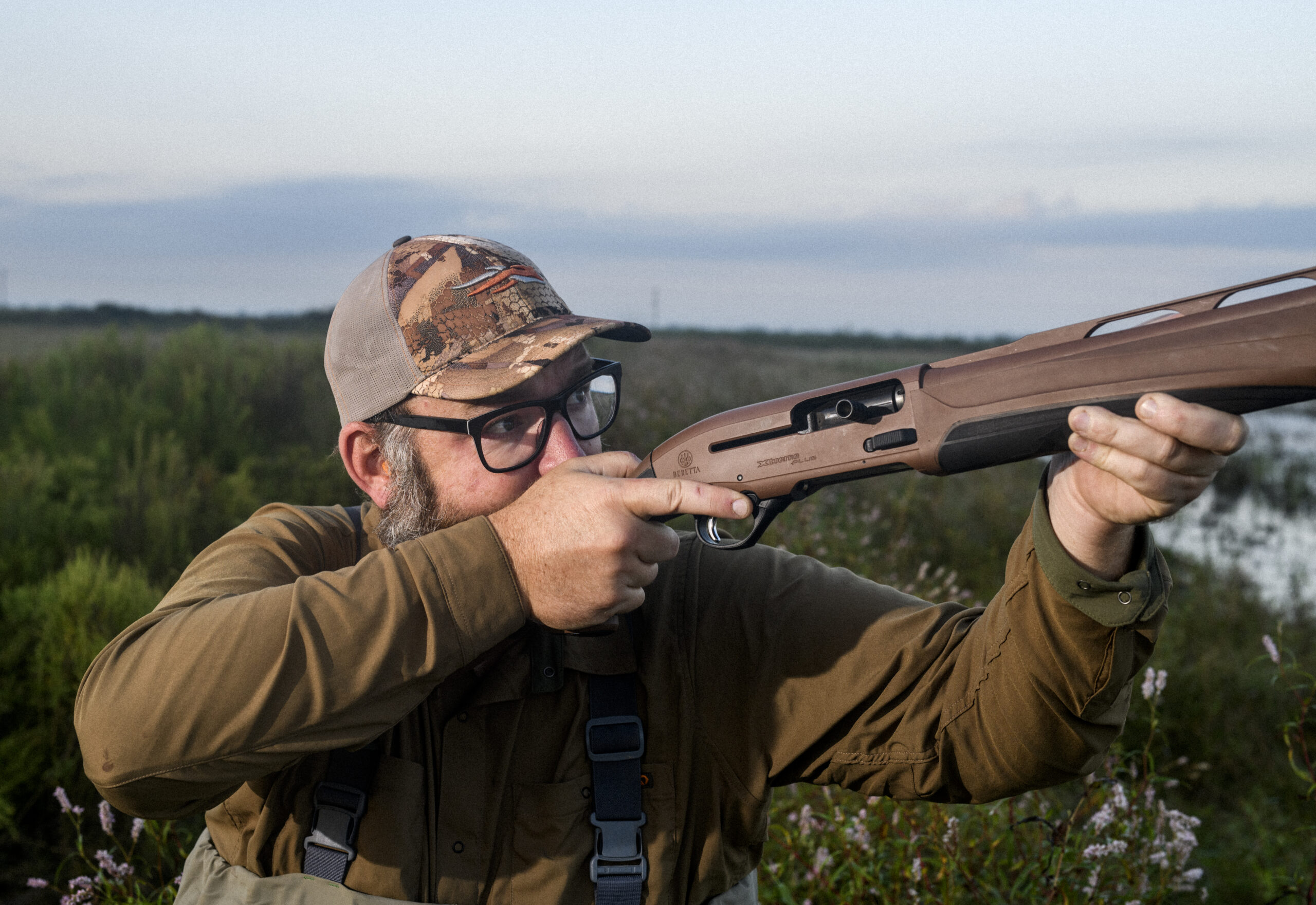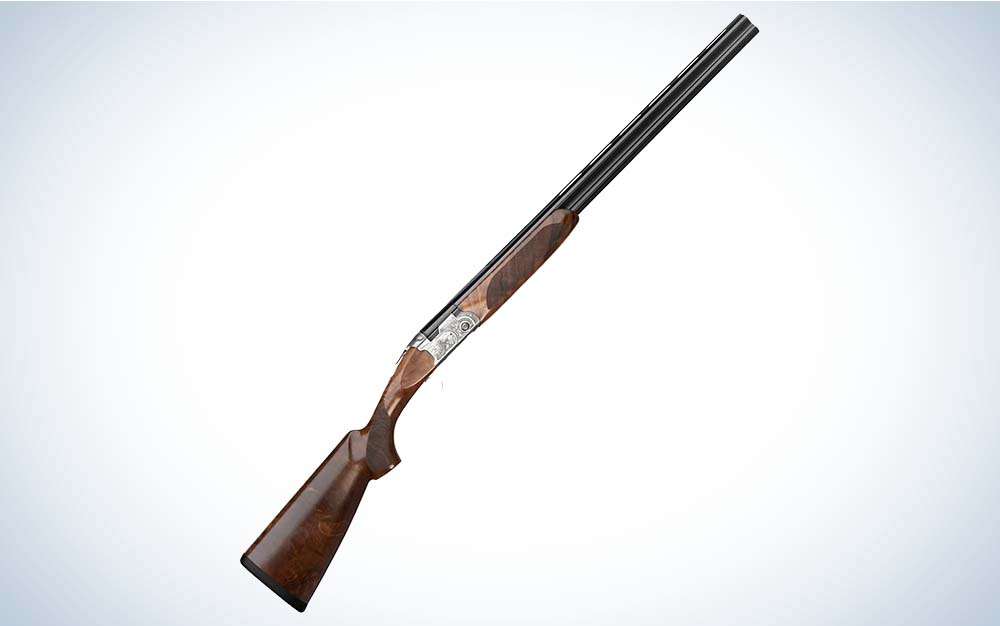None of us buy a pair of shoes without first trying them on. But when you are in the market for a new shotgun that’s precisely the predicament you face. You can’t leave the store with the gun and drive to the skeet range to see if it’s a good fit until you pay for it. So, how do you know if an off-the-shelf shotgun is the right one? Fortunately, there are many ways to check gun fit without ever firing a shotshell. And there are even more ways of adjusting gun fit after your purchase.
But first, if you are a new shooter and this is your first shotgun, it’s best if you don’t buy right away. Take some shooting lessons first. Borrow guns from friends or at the range, if possible. You don’t know if a gun is right for you until you learn the basics of shooting. That said, if you must have a new gun now, know that your shooting style and body will partially adapt to the gun. It is different once you have learned to shoot. Then you will want a gun that fits you so you can continue to shoot in the manner you’re accustomed.
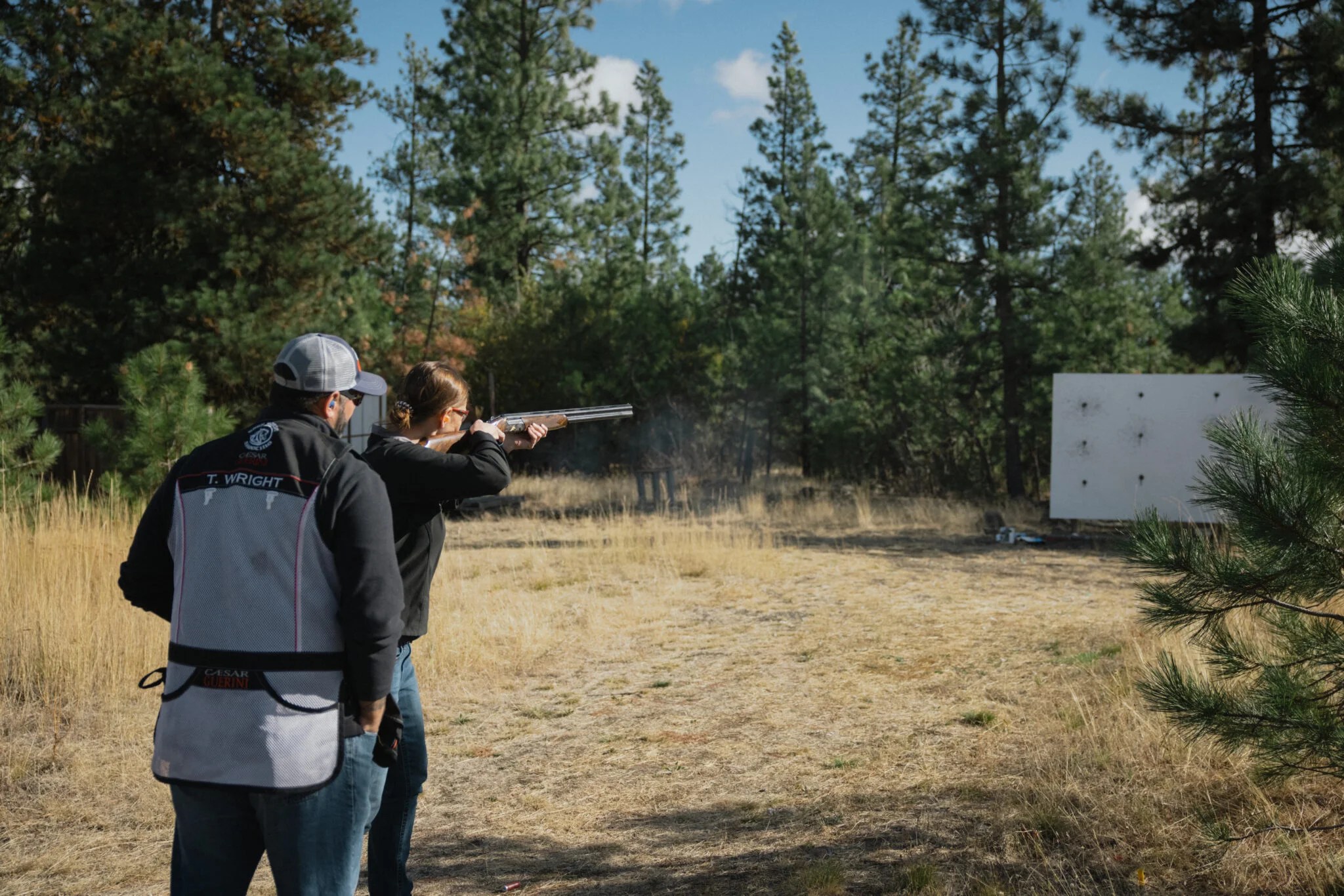
Find Your Proper Sight Alignment
The usual approach to testing gun fit when you can’t shoot a smoothbore is to mount the unloaded gun and see if it lines up correctly under your dominant eye. This is best done by starting with your eyes closed. Shut your eyes and mount the gun so that it feels comfortable. Snuggle in a bit. Then open your eyes. Does your dominant eye look straight down the rib? If it is to either side, that means that the cast, or lateral bending of the stock, isn’t quite right for you. As to correct stock height, the store manager or a shooting friend can help you by looking down from the front of the mounted empty gun towards your eye and noting where your iris aligns with the rib. You can also check eye alignment yourself by mounting the gun in front of a mirror.
If you already have a gun which you shoot well, bring it to the gun shop so that you can check the fit of the new gun against the proven one. If you don’t shoot your own gun well, bring it along anyway so that you can see how the new gun will differ to improve your shooting. It will also help eliminate guns of a similar design.
How Much Rib Do You See?
Although this is very personal, I don’t like to look flat down the rib when the stock is against my cheek with moderate pressure. That’s because when I need to shoot a dropping bird, I tend to cheek a little tighter and that causes my eye to go under the rib, which obscures the target. I like to see a little bit of rib when I cheek normally. This allows me to keep the target in full view and slightly float the target instead of covering it up with the muzzle.
If the gun has a center bead in addition to the front bead, many shooters like to line them up to create a figure eight with the center bead just touching the bottom of the front bead. If there is no center bead, a trick that I have found useful is to lay a penny flat on the rear-most part of the rib and cheek the gun normally. Doing that, usually I can still see the front bead, but not the front part of the rib. That gives me just about the amount of height that I need in my field guns, which come with flat ribs. You may want a different sight picture than I do, depending on the game, clay target presentations, or your shooting style.
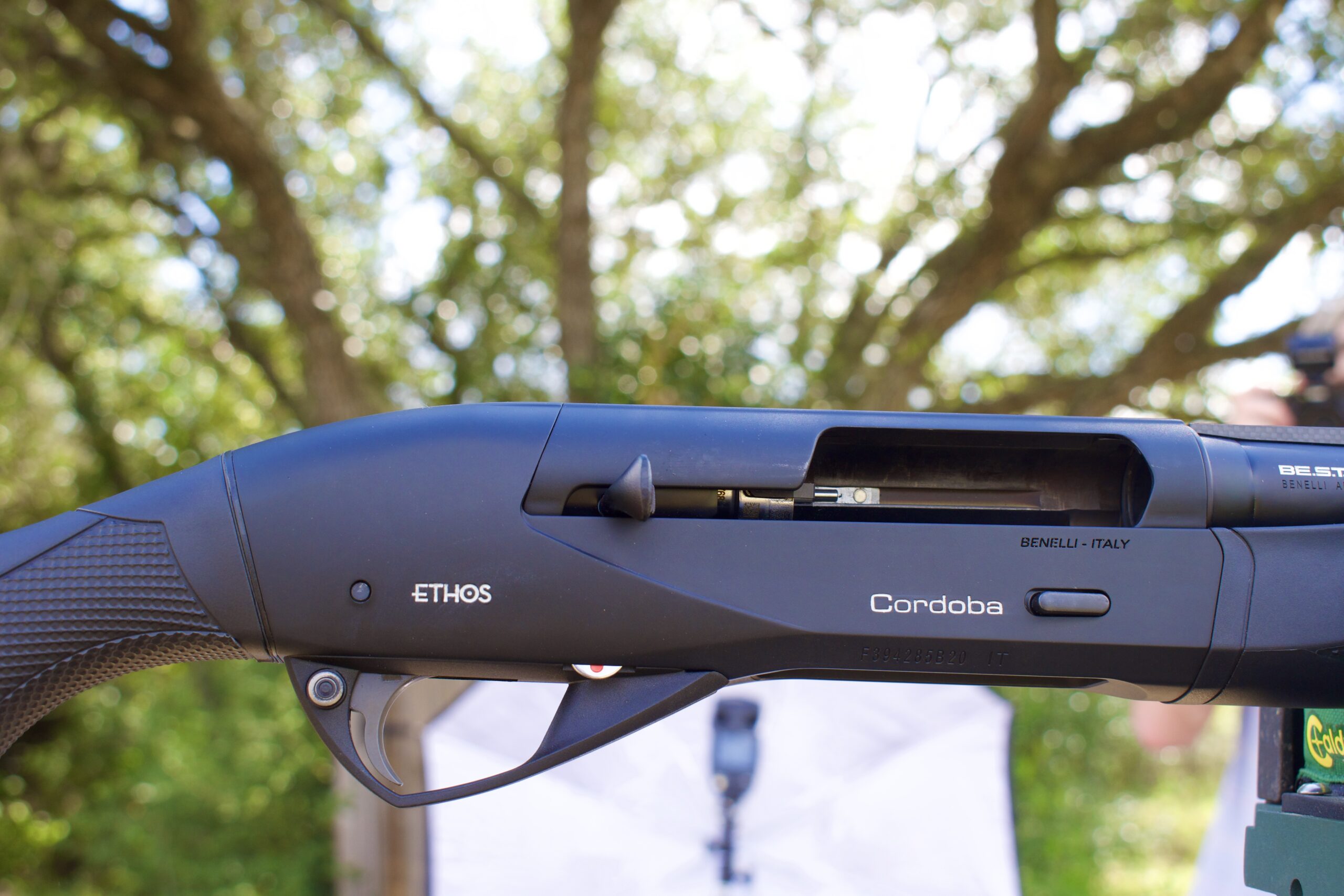
Some Shotguns Fit Better Than Others
If you are considering an automatic or pump shotgun, they often have fitting advantages. Many of today’s semi-autos are shim adjustable. They come with different shims which you can place between the head of the stock and the rear of the action to change the height and cast of the stock to suit the shooter. This basically allows you to easily alter the stock for an ideal fit. Most pump guns do not come with this feature, but a good gunsmith should be able to make and insert shims in a pump.
Unfortunately, over/unders and side-by-sides don’t have this feature due to the way the stocks fit into the receivers. If the stock is too high or doesn’t have enough cast off, one of the options is to sand it down to fit and then refinish it. The problem is when you want to increase height or reduce cast wood must be added. A highly skilled gunsmith may be able to bend the stock to fit you using heat lamps or moisture, but it is expensive and sometimes the wood doesn’t stay bent. Some modern target guns are built with an adjustable cheek piece. This allows for easy adjustment of cast and height. Unfortunately, an adjustable cheek piece is a bit cumbersome on a field gun, so you don’t find them on those. You can also have a gunsmith make a stock that fits your body type, but it can be a pricey endeavor. A cheap DIY alternative is just to add some moleskin to the comb of the shotgun.
Length of Pull Is a Key Component to Gun Fit
You also need to check stock length. While there are different preferences, a good rule of thumb is to have about 1½ inches between the back of your trigger-hand thumb and your shooting glasses when mounted. Make sure that you are wearing your shooting clothing when you are trying a new gun out in the store, so that your reach will be consistent. If you are a duck hunter, don’t test the gun in a T-shirt. Note that a short stock will often increase felt recoil. One that is too long will inhibit gun mount and make control more difficult. Too short or long stocks can also hinder accuracy. However, stock length isn’t a deal breaker because changes in length are generally very simple to make by using a recoil pad of different lengths. You can also add spacers to some stocks by unscrewing the butt plate. Longer stocks can be cut to fit smaller shooters as well.
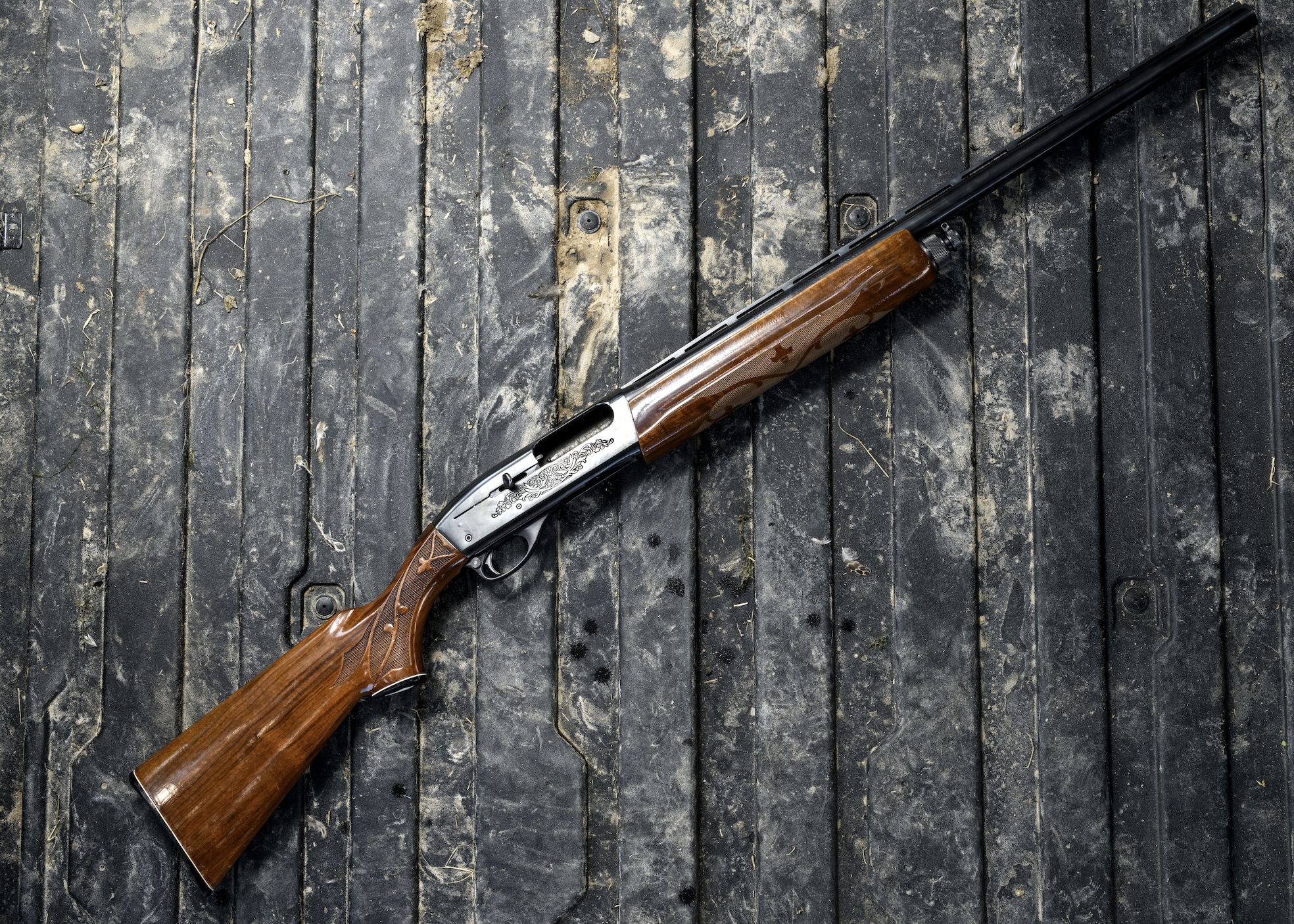
One Size Does Not Fit All
What are the chances of finding a gun that fits perfectly? Are there any brands and models which seem to fit most people? The answer to that is maybe. The problem is that there is no such thing as a standard gun measurement. Standard Remington 1100s—arguably the most popular semi-auto for target shooters in the 1970s—measured 1½ inches (drop at comb) x 2½ inches (drop at heel) x 14 inches (length of pull) through most of their production run. With a thin comb, they often suit the average American male. But then look at some European guns. The Fausti Class over/unders are slightly longer, measuring 1½ x 2¼ x 14½ inches as is the Beretta Silver Pigeon I 20-gauge, listed as measuring 1⅜ x 2¼ x 14¾ inches. Remember that a gun stock for pre-mounted target shooting can be a little longer than the stock of a field gun, which must be mounted under many different conditions.
In addition to stock height, cast, and length for proper gun fit you will want to make sure that the pitch of the stock suits you. Pitch is the angle of the butt plate where it fits your sloping shoulder. Four degrees is standard. You want to make sure that the toe of the stock doesn’t dig into your chest. Pitch, like length, is easily adjusted. You can use a tapered recoil pad spacer to get the pitch right.
While you are at it, make sure that the grip suits your hand and that the trigger is comfortably within reach. Some target guns have triggers which can be moved back-and-forth, but this is rare in field guns.
Read Next: The Best Duck Hunting Shotguns for Waterfowlers
Not All Shotguns Are Created Equal
Clearly, if you are buying a gun off the shelf, it makes sense to see if you can borrow one of the same make and model from a friend to shoot before committing. Or you may find the same gun as a rental at a shooting range. That way you should know how that model shoots and fits before you lay your money down. But even that process has its flaws. Mass production of shotguns can lead to differences in gun dimensions. The measurements of the same model gun may be slightly different depending on when each individual gun was produced. So, you should still follow the guidelines I’ve laid out even when you are looking to buy a shotgun you believe is already the right fit.

